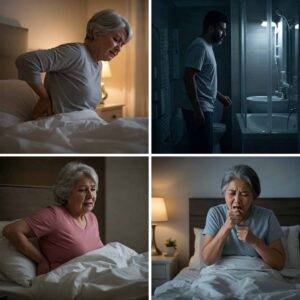
Caring for an elderly loved one means prioritizing their safety and well-being, especially as they age. Medical alert systems provide a reliable way for seniors to get help quickly in emergencies, offering peace of mind to families, especially for those with loved ones who live alone or have limited mobility
However, no device, no matter how sophisticated, can replace the security of having someone physically present. In-person protective supervision is always the gold standard. Medical alert systems can assist in emergencies, but they notify after an event has occurred, making them second-tier compared to having someone by your loved one’s side at all times.
This guide will cover the 9 best medical alert systems for elderly care, explain how they work, and help you determine the best fit for your loved one’s needs.
What Are Medical Alert Systems?
Medical alert systems, also called personal emergency response systems (PERS), are devices designed to quickly connect seniors to help in emergencies. They typically consist of a wearable device like a pendant or wristband, paired with a base station for communication.
These systems are invaluable for seniors at risk of falling, those living alone, or anyone who may need quick access to emergency services. The goal is simple: enable elderly individuals to call for help with minimal effort.
Key Features of Medical Alert Systems
Medical alert devices are not built the same. However, below are some key features you can find across devices:
- Emergency Buttons: Available on pendants, wristbands, or medical alert smartwatches, these buttons activate the alert system.
- Fall Detection Devices: Some systems can detect a fall automatically and notify emergency services or a pre-set contact.
- GPS Tracking: Found in mobile systems, GPS allows caregivers or responders to locate the user if they’re away from home.
- Two-Way Communication: Enables direct communication with emergency services through a built-in microphone and speaker.
- Water-Resistant or Waterproof Designs: Many wearable devices are designed to be water-resistant, ensuring they can be worn in the shower or during outdoor activities.
- Activity Monitoring: Advanced systems can track movement patterns and alert caregivers to changes in daily activity that may suggest potential health concerns.
- Medication Reminders: Some systems include reminders to take medications, helping seniors stay on track with their health routines.
How Medical Alert Systems Work
Medical alert systems are designed to offer quick, reliable assistance during emergencies, but their functionality goes beyond just pressing a button.
These systems use advanced technology to ensure seniors are protected no matter where they are.
Here’s a closer look at how they operate and the mechanisms behind their reliability.
Activation of the Alert
The process starts when the user triggers the system, usually by pressing a button on a wearable device like a pendant, wristband, or smartwatch.
In systems with fall detection, the alert may activate automatically when a fall is detected, even if the user is unconscious or unable to press the button.
Connection to the Monitoring Center or Emergency Contacts
Once the alert is triggered, the system sends a signal either to a professional monitoring center or directly to pre-designated emergency contacts like a family member, or 911.

Here’s how the connection works:
- Monitored Systems: A trained operator at the monitoring center responds to the alert. They speak with the user through a two-way communication system and assess the situation. Based on the need, they may contact emergency services, caregivers, or family members.
- Unmonitored Systems: These systems skip the monitoring center and call emergency contacts or 911 directly. While this can save on subscription costs, it places the responsibility of responding on the contacts or emergency services.
Two-Way Communication
Most systems include built-in microphones and speakers, allowing users to communicate directly with responders. This feature is critical in clarifying the nature of the emergency, especially if the user cannot move or provide detailed information.
Signal Transmission Technology
Medical alert systems rely on different types of connections to operate effectively:
- Landline Systems: These connect through a standard phone line and are ideal for users who spend most of their time at home.
- Cellular Systems: These use cellular networks to transmit alerts and are suitable for homes without a landline.
- Wi-Fi Integration: Some systems combine Wi-Fi connectivity for enhanced location accuracy or backup communication.
GPS Location Services
For mobile medical alert systems, GPS technology is useful in locating the user during an emergency. This feature is particularly helpful for seniors who are active or frequently leave home. Caregivers and emergency responders can pinpoint the user’s location to ensure timely assistance.
Optional Fall Detection
Fall detection is an important feature in many medical alert systems. These devices use sensors to detect a sudden fall or lack of movement and automatically send an alert. While it’s not perfect, fall detection offers extra safety for seniors who are more likely to fall.
Testing and Reliability
Users should test their medical alert systems regularly to make sure they work properly. Most systems have a simple testing mode that lets users check the connection without causing an emergency alert. Testing the system ensures it’s ready when needed.
System Customization
Many medical alert systems can be customized to fit the user’s needs. For example:
- Setting up multiple emergency contacts
- Adjusting sensitivity for fall detection
- Adding features like medication reminders or activity monitoring
Battery Life and Power Backup
Battery life is an important factor, especially for mobile systems. Most devices can last several days on a single charge, while in-home systems usually have backup batteries to keep them working during a power outage.
Different Types of Medical Alert Systems
Understanding the various types of medical alert systems is essential when deciding which one is right for your loved one.
1. In-Home Medical Alert Systems
These systems are designed for seniors who spend most of their time at home. They rely on a landline or cellular connection and typically include a base station with a help button.
The senior wears a pendant or wristband that pairs with the base unit. In-home systems are great for older adults who prioritize simplicity and don’t require mobility features like GPS tracking.
2. Mobile Medical Alert Systems
Mobile medical alert systems are a better fit for active seniors who are often out and about.
These systems use cellular networks and GPS technology to provide protection anywhere. They usually include wearable devices with built-in fall detection and two-way communication.
Mobile systems ensure that seniors can access help whether they’re at the grocery store, visiting friends, or traveling.

Types of mobile medical alerts
Mobile medical alerts come in various forms, each offering unique features to ensure seniors get help quickly while away from home. Here are the common types:
- Wearable Pendants or Necklaces: Small, lightweight devices that can be worn around the neck, providing quick access to help at any time.
- Wristbands or Smartwatches: These devices look like regular watches but include medical alert features like fall detection and emergency communication.
- GPS-enabled Devices: Mobile alert systems with built-in GPS to help responders locate the user, especially useful when the person is away from home.
- Smartphone Apps: Some systems allow seniors to use their smartphones as medical alert devices, often with fall detection and emergency contact features.
- SOS Buttons: Small, portable buttons that can be carried in a pocket or bag, offering a simple way to call for help while on the go.
3. Hybrid Systems
Hybrid systems combine the best of both worlds by offering in-home and mobile functionality. These systems are perfect for seniors who divide their time between staying at home and being active outside. They provide seamless coverage and are particularly useful for individuals with unpredictable routines.
Monitored vs. Unmonitored Medical Alert Systems
When it comes to choosing a medical alert system, one of the key decisions caregivers and family members must make is whether to opt for a monitored or unmonitored system.
Each type has its own set of advantages and limitations, depending on the level of care and the user’s specific needs. Let’s break down the differences between the two so you can make an informed decision for your loved one.
Monitored Medical Alert Systems
Monitored systems are the most common type of medical alert system, offering 24/7 professional monitoring by trained operators. These systems are designed to provide an immediate response to emergencies, even when the user cannot speak for themselves.
When the alert button is pressed, the operator will attempt to communicate with the user via a two-way speaker, asking if assistance is needed. If they don’t receive a response or if the situation seems critical, they will immediately dispatch emergency services or contact family members and caregivers.
Pros:
- Help is immediately on the way, regardless of the user’s ability to speak or call for help.
- Monitoring centers are available around the clock, providing peace of mind to caregivers and family members.
- Operators can help users with situations that don’t necessarily require emergency responders, like alerting family members, or offering comfort until help arrives.
- Offers a more complete solution for seniors who live alone or have serious health conditions that require constant vigilance.
Cons:
- Monthly fees: Monitored systems generally come with a subscription fee, which can vary depending on the level of service, features, and equipment.
- Dependence on cellular or landline connection: These systems require either a landline or cellular network to operate effectively. While most modern systems use cellular technology, issues with connectivity or service interruptions could impact the system’s effectiveness.
- Limited customization: Some monitored systems may have limited options for customization based on personal preferences or specific needs.
Unmonitored Medical Alert Systems
Unmonitored systems operate differently in that they don’t rely on a third-party call center for help. Instead, they send alerts directly to designated emergency contacts or 911 when the user activates the alert. ]

These systems are typically simpler and less expensive but have their advantages and drawbacks.
Pros:
- Lower cost: Typically, unmonitored systems have no monthly monitoring fees, making them more affordable for those on a budget.
- No need for third-party involvement: The user or their contacts handle the emergency directly, providing more control over the response.
- Simplicity: These systems are generally easier to use and set up, often involving just the pressing of a button to activate the alert.
- Fewer dependencies: There’s no need for a cellular or landline connection to a monitoring center, as the system works by directly calling contacts or emergency services.
Cons:
- Delayed response time: Without a call center operator to immediately assess the situation, it may take longer for emergency services to respond, especially if the user is unable to speak or provide details.
- Limited support for non-emergencies: If the user only needs assistance or reassurance (not a true emergency), unmonitored systems might not be helpful, as they don’t allow for ongoing communication.
- Relies on contacts: The effectiveness of unmonitored systems depends entirely on the ability of emergency contacts to respond quickly. If a contact isn’t available, there may be delays in getting help.
Which is Best for Your Loved One?
Choosing between a monitored and unmonitored system largely depends on your loved one’s health, living situation, and budget.
If your loved one is relatively healthy and you or other family members can easily respond to emergencies, an unmonitored system might suffice.
However, for seniors with more complex health conditions or those who live alone, a monitored system offers greater peace of mind, knowing that help is just a button press away, any time of day or night.
In general, the decision should also consider how quickly emergency services need to be reached and the reliability of the emergency contacts. A monitored system is usually the safer option if you think there could be a delay in your ability to respond or communicate,.
Best Medical Alert Systems for Elderly Care
When it comes to choosing a medical alert system for your loved one, selecting the right one is crucial to ensuring their safety and peace of mind.
Here are the best 9 medical alert systems to choose from.
1. Bay Alarm Medical – Home System

Bay Alarm Medical’s Home System is one of their top-rated systems, providing reliable in-home emergency protection.
Features include:
- Base Station with 32-Hour Battery Backup: Ensures functionality during power outages.
- Waterproof Help Button: Can be worn as a pendant or wristband for easy access.
- 24/7 Monitoring: Professional monitoring ensures immediate assistance when activated.
- No Long-Term Contracts: Flexible month-to-month service without binding contracts.
- Optional Fall Detection: Automatically detects falls and alerts the monitoring center.
Pros:
- Affordable pricing starts at $24.95/month
- Reliable service with no hidden fees or contracts
- Water-resistant help button with a 600-ft range
- Optional fall detection
Cons:
- Limited advanced features compared to more expensive models
- The equipment design is somewhat basic and dated
Best For: The Bay Alarm Medical Home System is best for seniors who are mostly at home and want reliable, no-fuss protection with 24/7 monitoring.
2. Medical Guardian – Mini Guardian

The Mini Guardian is one of Medical Guardian’s top-rated systems, designed for active seniors who want portable protection. Features include:
- Compact and Lightweight Design: Ideal for on-the-go use
- GPS Tracking: Provides location tracking for emergency responders
- Two-Way Communication: Allows users to speak directly with an operator during emergencies
- Water-resistant: Can be worn in the shower or outdoors
- Automatic Fall Detection: Detects falls and sends alerts automatically
Pros:
- Portable, compact design
- Ideal for active seniors who are often on the move
- GPS and fall detection makes it ideal for travel
- 24/7 emergency monitoring
Cons:
- The monthly subscription fee is higher than some alternatives. Starting at $39.95/mo
- Battery life may need frequent charging (1-2 days).
Best For: The Mini Guardian is best for seniors who lead an active lifestyle and want both at-home and on-the-go coverage with GPS tracking.
3. Life Alert – Classic Medical Alert System

Life Alert’s Classic Medical Alert System is well-known for its long track record in the medical alert industry. It’s a reliable choice for those who need constant protection. Features include:
- Waterproof Help Button: This can be worn around the neck or wrist
- 24/7 Emergency Response: Direct connection to emergency dispatchers
- Range of 1,000 Feet: Allows users to call for help anywhere in the house
- Long Battery Life: 5+ years of battery life for the device
Pros:
- Trusted and widely known brand
- Excellent customer service and support
- Long battery life
Cons:
- No GPS tracking, limited to home use
- Expensive compared to other options
- Requires a landline for full functionality
Best For: The Life Alert Classic Medical Alert System is best for seniors who are mostly at home and need reliable emergency help, without the need for advanced features like GPS.
4. MobileHelp – MobileHelp Solo
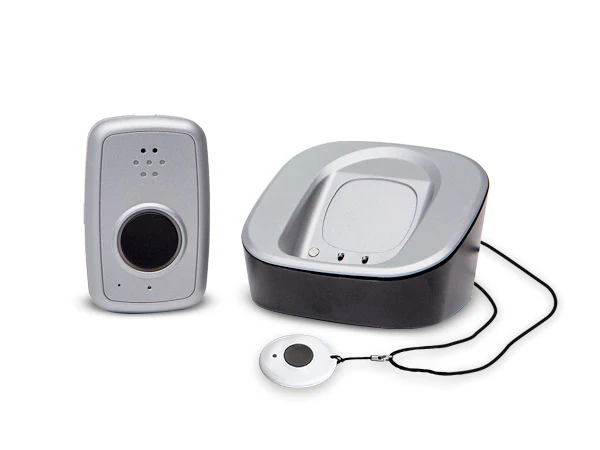
The MobileHelp Solo is one of MobileHelp’s most popular systems, offering portable protection. Features include:
- No Landline Required: Uses cellular technology to connect with emergency response teams
- GPS Location Tracking: Helps pinpoint the user’s location for faster assistance
- Water-resistant: Suitable for use in the shower and outdoors
- 24/7 Monitoring: Around-the-clock support from professional monitoring teams
Pros:
- No landline is needed, making it more versatile
- GPS tracking for location-based help
- Can be used at home or on the go
Cons:
- Higher monthly fees, starting at $34.95/mo
- Limited range for the wearable device
Best For: The MobileHelp Solo is best for seniors who need a system that works both at home and when they are out, especially those without a landline.
5. GreatCall – Lively Mobile 2
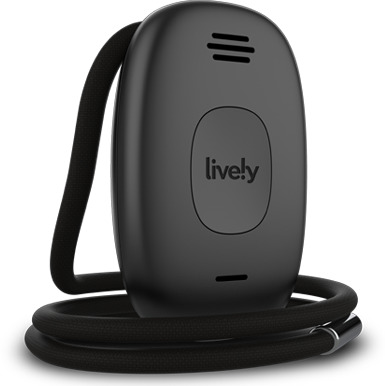
GreatCall’s lively mobile2 is a top choice for seniors who want a lightweight and easy-to-use device. Features include:
- Compact and Lightweight: Easy to carry around
- GPS and Fall Detection: Tracks user’s location and automatically detects falls
- One-Touch 5Star Urgent Response: Direct access to emergency responders
- Water-resistant: This can be worn in the shower
Pros:
- Affordable pricing
- Lightweight and discreet design
- GPS tracking and fall detection
Cons:
- Monthly service fees can be higher
- Limited battery life for continuous use
Best For: The Lively Mobile Plus is best for active seniors who need on-the-go coverage, with fall detection and immediate access to emergency help.
6. LifeFone – At-Home & On-the-Go

LifeFone’s At-Home System with GPS is ideal for seniors who want both in-home and portable coverage. Some key features include:
- Home Base Station with Long Range: Can work up to 1,300 feet from the base
- Waterproof Pendant or Wristband: Wearable for comfort and convenience
- GPS Tracking: Tracks the user’s location when they’re away from home
- 24/7 Emergency Monitoring: Immediate access to a live agent
Pros:
- Good range and GPS tracking
- Option to add a fall detection device
- Reliable emergency monitoring
Cons:
- Higher monthly fee than basic systems
- Requires cellular service for full functionality
Best For: This system is best for seniors who want protection both at home and on the go, with the added benefit of GPS tracking.
7. ADT – Medical Alert with Fall Detection

ADT’s Medical Alert with Fall Detection is ideal for seniors looking for home-based protection with fall detection capabilities.
- 24/7 Professional Monitoring: Connects with emergency dispatchers immediately
- Fall Detection: Automatically detects falls without the user needing to press the button
- Waterproof Pendant: Wearable and safe for showers
- Mobile Option Available: Can be used for both at-home and on-the-go protection.
Pros:
- Trusted security company with a strong reputation
- Fall detection is built-in
- Option for home and mobile solutions
Cons:
- Higher price point.
- Might require a long-term annual contract.
Best For: This system is best for seniors who want a comprehensive medical alert system that includes fall detection and 24/7 monitoring.
8. Alert1 – In-Home Medical Alert System
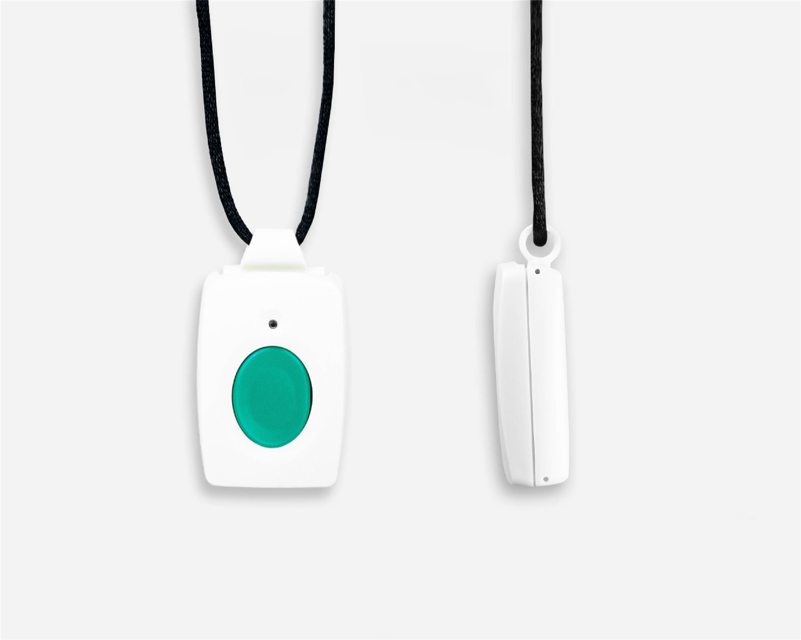
Alert1’s In-Home Medical Alert System is designed for seniors who need in-home protection with reliable monitoring. Features include:
- Waterproof Pendant and Wristband: Wearable devices that are comfortable and effective
- 24/7 Emergency Monitoring: Immediate response from a live agent when needed
- Range of 600 Foot Range: Allows mobility around the house without losing signal
Pros:
- Affordable and reliable, starting at $19.95/mo when paying annually
- No contracts required
- Two-way communication with emergency response teams
Cons:
- Limited portability compared to mobile devices
- No fall detection option with the base system
Best For: The Alert1 In-Home Medical Alert System is ideal for seniors who primarily stay at home and need a reliable emergency response system.
9. Medical Alert – At-Home Medical Alert System
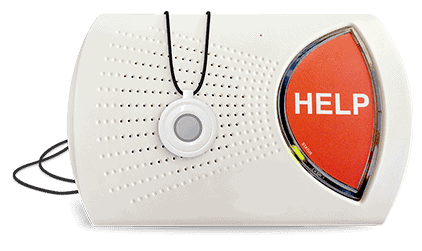
At-Home Medical Alert System offers an affordable, reliable option for seniors who need home-based protection. Features include:
- Long Battery Life: 30+ hours of backup during power outages
- Waterproof Help Button: Can be worn comfortably on the wrist or neck
- 24/7 Monitoring: Direct communication with emergency dispatchers
- 800-foot range.
- Optional fall detection
Pros:
- Affordable and easy to use, starting at $19.95
- Long battery life for continued protection
- No contracts or hidden fees
Cons:
- Limited features compared to more advanced systems
- Only works within a limited range from the base
Best For: This system is ideal for seniors who are mainly at home and need a reliable and simple alert system without advanced features like fall detection.
How to Choose the Best Medical Alert System
Finding the best fit involves more than just comparing costs or features. It’s about identifying what matters most to your loved one’s lifestyle and safety.
Key Factors to Consider
- Lifestyle Needs: Active seniors may prefer a mobile medical alert system, while those at home might benefit more from a traditional in-home system.
- Features: Look for optional fall detection, GPS tracking, and two-way communication.
- Budget: Some systems have high upfront costs, while others require monthly fees. Consider what’s sustainable.
- Ease of Use: Seniors should feel comfortable and confident using the device.
Budgeting for Medical Alert Systems
Medical alert systems range in price. Subscription-based systems may cost $20-$50 monthly, while unmonitored systems typically have a one-time fee. Ensure the system you choose provides value for its cost.
Takeaway
Medical alert systems are an invaluable resource for keeping seniors safe, but they are no substitute for personal supervision. Even the best medical alert systems with advanced features like fall detection and GPS tracking cannot prevent emergencies—they can only respond to them.
For true peace of mind, nothing compares to having someone physically present with your loved one at all times. At Amy’s Eden Senior Care, we provide in-person protective supervision, ensuring that your loved ones are cared for by compassionate professionals.
Contact us today to learn how our services can provide the ultimate safety and comfort for your family member. Because when it comes to care, people are always better than systems.




